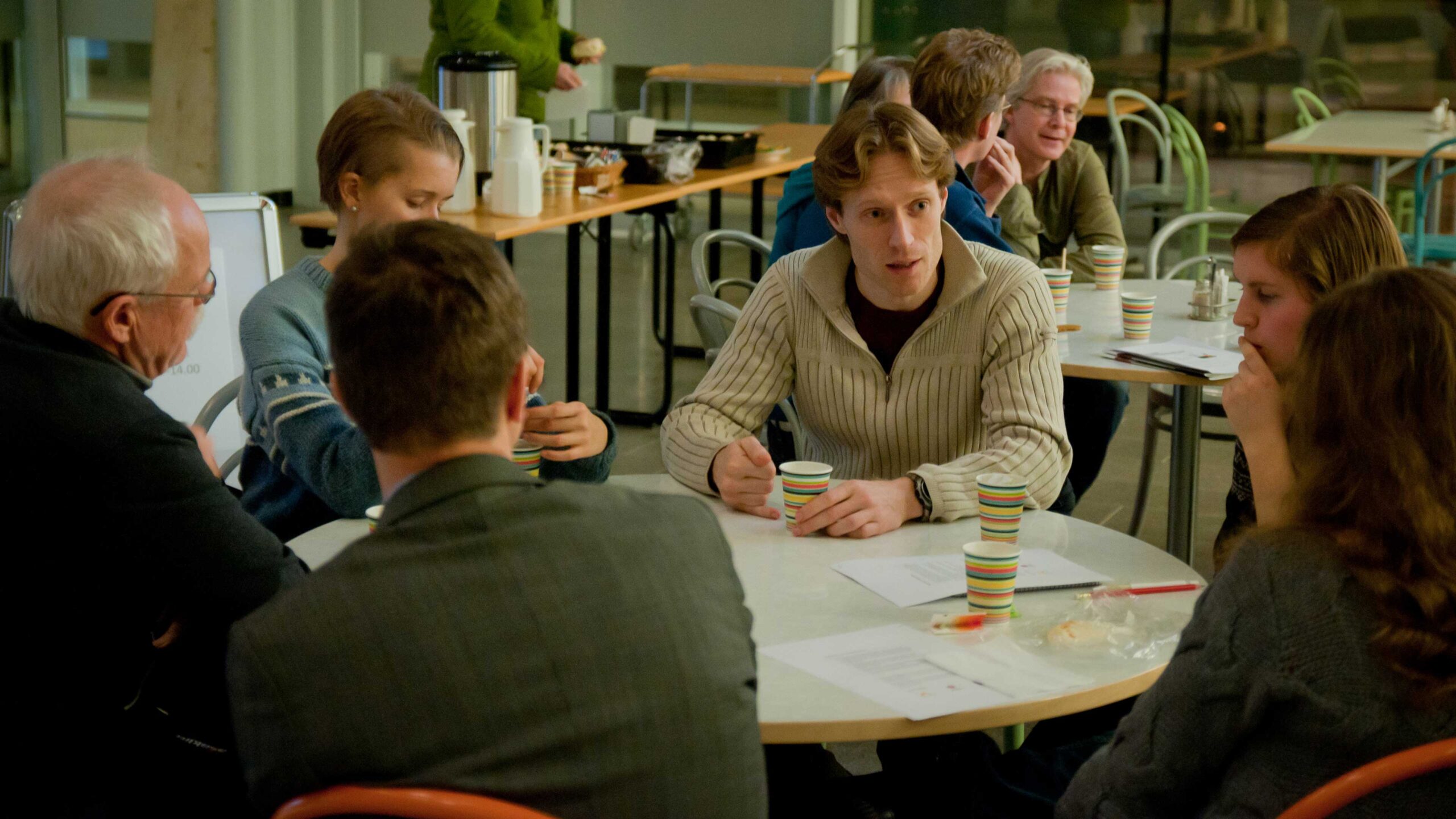Is it safe to eat genetically modified food? Does genetically modified food taste differently from ordinary food? Does wild and genetically modified salmon differ in appearance? These were a few questions discussed at a dialogue event on 7 December, organised by VA and Uppsala University.

The public met with three GMO (genetically modified organisms) researchers who explained benefits and risks of GM food and discussed possible impacts on human beings, environment and animals. The principle of GMOs is for example that the genetic material of a plant or an animal is changed in order to make them resistant to pests and other environmental influences, to increase the degree of nutrition or to let them grow faster. A screened film from the EU project ComScience explained how the genes of potatoes are changed to make them pest-resistant. The introduced gene enables the potatoes to produce proteins against pests leading to a reduced use of pesticides.
Same taste, effect on body unclear
GM potatoes and other GM food do not differ in taste compared to GM free food. But the long-term impact on the body is not clear according to the film. GM food and non GM food have the same enzymes and the body digests both types in the same way. But GMO research is too young in order to fully estimate long-term effects. “A residual risk is always there” was stated in the film. Most of the food which can be purchased in Europe and the US is still GM free. However, GM food has only to be labelled if more than one per cent of the ingredients are genetically modified. And animal food must not be labelled at all so GMOs get indirectly into our nutrition.
Controversial debate in Europe
Particularly in Europe there is a controversial debate about risks and benefits of GMO.
Mats G. Hansson, professor for biomedical ethics at the Uppsala University labelled the public discussion about GMO as very emotional, often driven by environmental or industrial interest groups, showing only one side of the medal. He meant that researchers are also often arguing in favour of certain interests and not on a scientific basis. He stated that anti-GMO organizations often set the agenda for the debate.
Jens Sundström, researcher at the department of plant biology and forest genetics at the Swedish University of Agricultural Sciences in Uppsala, said that “it is very hard to get GM food approved. It is a very complicated, cumbersome and cost-intensive process because there are many regulations to be considered at EU level.” This might also be the reason why it mostly is larger companies do research about GMO. Public funding is much less available in Sweden. Therefore many GMO researchers are employed by larger companies.
But what are the environmental impacts of genetically modified potatoes or corn?
GMO opponents are afraid of the irreversibility and compare it to atomic energy. They fear super-weeds if pollen from GM crops crosses with non GM crops. Also farmers could no longer distinguish between GM free crops and GM crops.
GM salmon soon on the US market?
So far only GM crops and no GM animals are on the food market. But a US company is currently working to get a genetically modified salmon approved.
Fredrik Sundström, assistant professor at the department for ecology and genetics at the Uppsala University analyses the effects of genetically modified salmon on the environment. Salmons’ growth hormone gene was altered which causes them reaching full size much faster than regular salmons. Fredrik Sundström studies GM salmon in comparison with normal salmon in terms of growth and eating behaviour. Of course the GM salmon grows faster but also some unexpected results were found. For instance, GM salmon’s “appetite” varies also across the seasons. “GM salmon eats more in spring than in winter, exactly like the wild salmon”, Fredrik Sundström said. But “estimating the detailed effects of GM salmon on the environment is very hard, ” he concluded.
In the end of the event, the researchers and the audience met in engaged round table discussions about GMO.
The event was part of the European project ComScience which tries to define the best ways of communicating science and health related research to the general public. At the start and the end of the meeting, participants were asked to fill in questionnaires in order to evaluate the event and measure the learning experience. The aim of the project is to develop best practice on how to communicate research.
Heidi Armbruster-Domeyer, VA
Photos: Heidi Armbruster-Domeyer and Klas-Herman Lundgren

